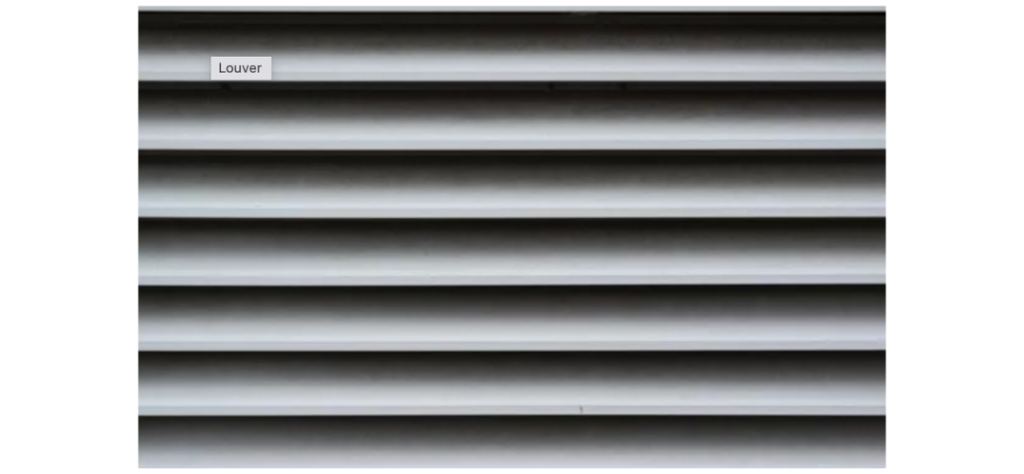A Louver is an arrangement or device like a window shutter that would have horizontal slats .
Purpose of a louver is to admit light and air, but to keep out rain and direct sunshine. The angle of the slats may be adjustable, usually in blinds and windows, or fixed. Louvers are typically made from extruded aluminium or galvanised steel.
For the majority of applications, extruded aluminium louvres are lightweight and strong. These louvres can easily obtain the most finish possibilities due to the porous nature of aluminium. Louvers for extreme weather are frequently made of roll-formed aluminium. Although heavier and more resilient than their aluminium equivalents, galvanised steel and stainless steel louvres cannot be finished in all ways. Heavy gauge louvres, like those constructed of stainless steel, will need additional support.
In areas of high velocity winds, and wind driven rains, special louvers are made use of.
Points to be considered:
- Free area/ Core Area/ Effective area
- Static
- Beginning of water penetration point based as per AMCA 500L
- Wind load & structural consideration
Types Of Louvers
- Stationary louvers – they are designed with angled or airfoil style blades that not only protect from extreme weather conditions but also offer sound attenuation
- Adjustable louvers – equipped with airfoil blade, these louvers are easily adjustable.
- Drainable/ Non Drainable
- Vertical Blade/ Horizontal Blade
- Sand Louvers
Testing Standards For Louvers.
Louvers can be tested as per-
- AMCA 500L Water Penetration Test
- AMCA 550 High Velocity Wind Driven Rain Test- For Louvers in Hurricane prone regions. Florida Mechanical Code (FMC) also requires AMCA550 louvers
- BOPW
- Miami Dade County Hurricane Testing Std
- Florida Building Code
- Missile Impact Test
Air Volume & Face Velocity
Air volume refers to the amount of air flowing through the louver, expressed in CFM (cubic feet per minute). Face velocity is the speed of the air flow across the louver’s face. Face velocity is typically expressed in FPM (feet per minute).
These two factors will help you determine the louver’s air performance, which dictates how the louver handles air flow. Air volume and face velocity are important to all louvers.
Air Volume in CFM = area x velocity in FPM
Area = CFM (air volume) / Velocity fpm
Effective Area of louver = cfm / face velocity (fpm)
Free Area = Air volume (cfm) / Velocity (fpm)
Water Penetration Statement
AMCA defines the point of beginning water penetration as the free area velocity at which the AMCA water test has yielded 0.01 or less ounces of water per square foot of louver free area during a 15-minute test period. F or most applications, a high-performing drainable louver, one with a higher beginning point of water penetration and lower pressure drop can be selected based on applications and cost benefit considerations.
For more information and help in selecting the right louvers for your building contact us at sales@atmaxfiltration.com or call us on (816)-745-9994

